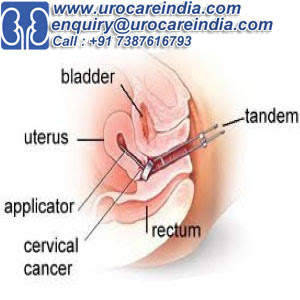Look out for early signs to a violent mind,
warns , even as she asks experts for tips on dealing with aggression
ISN’T it intriguing that the more we progress
as a society, the more we seem to regress as individuals? How else would you
explain the increase in violence all around? Be it on the domestic or the
corporate front, violence is becoming so common that we’re getting almost
inured to its occurrence. From supermodel Naomi Campbell hurling her phone at
her housekeeper, to Aishwarya Rai being manhandled by Salman Khan, celebrity
fisticuffs are as common as a fishwife’s spat. And increasingly so.
Why are we, as a society, so much more able
to express that violent streak today, as compared to our forefathers? To find
answers, it might do well to delve into the development of the violent mind…
According to neurologist, Dr Rakesh Singh, Lok Hospital, Thane, “There is no
change in the brain patterns of a violent mind. But certain experiments have
shown links between imbalance of certain neurotransmitters like noradrenaline
and dopamine and the violent mind.”
TANTRUM ALERT
If you’re wondering whether or not to call
in the cops when your neighbour cuts up your doormat, Dr Vikas Mohan Sharma,
psychiatrist at the Vidyasagar Institute of Mental health and Neurosciences
(VIMHANS), Delhi, explains what really constitutes violent behaviour. “It’s any
act that stems from aggression. I emphasise the word ‘aggression’, which may be
a precursor to violence. We are all aggressive to some extent as it is the
basic instinct for survival. When this aggression is unchecked at the
provocation of something or someone, the person may resort to violence.
Usually, it is seen that children who are born stubborn, very impulsive or
extremely short-tempered, are more susceptible to becoming violent if their
aggression is not channelised into positive directions. Parents must play a big
role in this, perhaps even liaising with the child’s teachers to check for any
signs of excessive, uncontrolled aggression. Counselling at an early age can
help stem the rot,” advises Dr Sharma.
DISTRESS
FROM STRESS
An extremely short-tempered person has a
limited ability to control temper and therefore can, on an impulse, commit
violent acts, adds Mumbai-based psychiatrist Dr Amit Upasham. He says, “Today,
stress in general has increased. There is pressure to excel in every aspect of
life, which gives rise to frustration. Our coping skills have also reduced
considerably. Increased portrayals of violence in movies and television serials
are also influencing the mind. For example, there was a recent media report on
how a man tortured his wife to death inspired by actor Nana Patekar’s role in
the film Agnisakshi. A combination of all these factors could lead to violent
repercussions.”
LIVING ON THE EDGE
Our fast-changing lifestyle has much to do
with the increase in violent outbursts too, he maintains. “For instance, we no
longer sleep enough. Less sleep affects the biological rhythm of the body and
consequently the person becomes more irritable, snappy and often violent,” says
Dr Upasham. Similarly, food habits can trigger violent behaviour too, says
Purwa Duggal, chief dietician at Wockhardt. “Studies claim that poor nutrition
may trigger aggressive behaviour. Caffeine, found in coffee, tea, cola-type
beverages and chocolates, stimulates the central nervous system and dehydrates
the body, which can affect mood and incite violence,” she explains.
ANGER IN ADVERSITY
“When a person has to make do with fewer
resources like time, money or coping skills to manage their stresses, they are
more prone to violent behaviour,” says Dr Sharma. Some indicators for a
potentially violent person would be him or her snapping at people, being under
constant pressure (creating a pressure cooker-like situation which might result
in violence), etc.
A violent mind born out of such social or
situational reasons cannot be clinically treated, as these are not illnesses,
says Dr Sharma. And terrorists, too, can be perfectly normal human beings who
look at their violent acts as a part of their job, driven by a strong belief,
somewhat like that of a hangman. Dr Upasham, though, maintains that terrorists
could be products of psychopathic minds, where people do things that are not
normally perceived to be right. Such a psychopathic mind, which cannot
differentiate between right and wrong, can be treated.
CLINICALLY SPEAKING
·
People
suffering from personality disorder can also be prone to violence.
·
Someone
with Antisocial Personality Disorder does not have any regard for laws, rules
or regulations and hence sees no harm in flouting them. This trait can be seen
among children as part of Conduct Disorder. Counselling and psychotherapy can
be effective here.
·
Someone
with Borderline Personality Disorder may have a major difficulty in controlling
his or her emotions and nurture a poor self-image.
·
The
mentally ill suffering from severe depression, paranoid schizophrenia and
bipolar disorder can also become violent because the disease affects their
judgement.
If you live with a violent person...
·
Be patient
and keep your cool
·
Ensure
that he/she does not have easy access to sharp objects like knives or glass
·
Don’t
bring up topics or do things that you know will disturb or enrage him/her
·
Avoid
confrontations. If possible, try to distract the person. Arguing is a strict
no-no. Talk gently and softly.
·
Whenever
you see signs of escalating aggression, try to ensure the presence of
family/friends/neighbours
·
Restrict
his/her consumption of caffeine-based products…

















